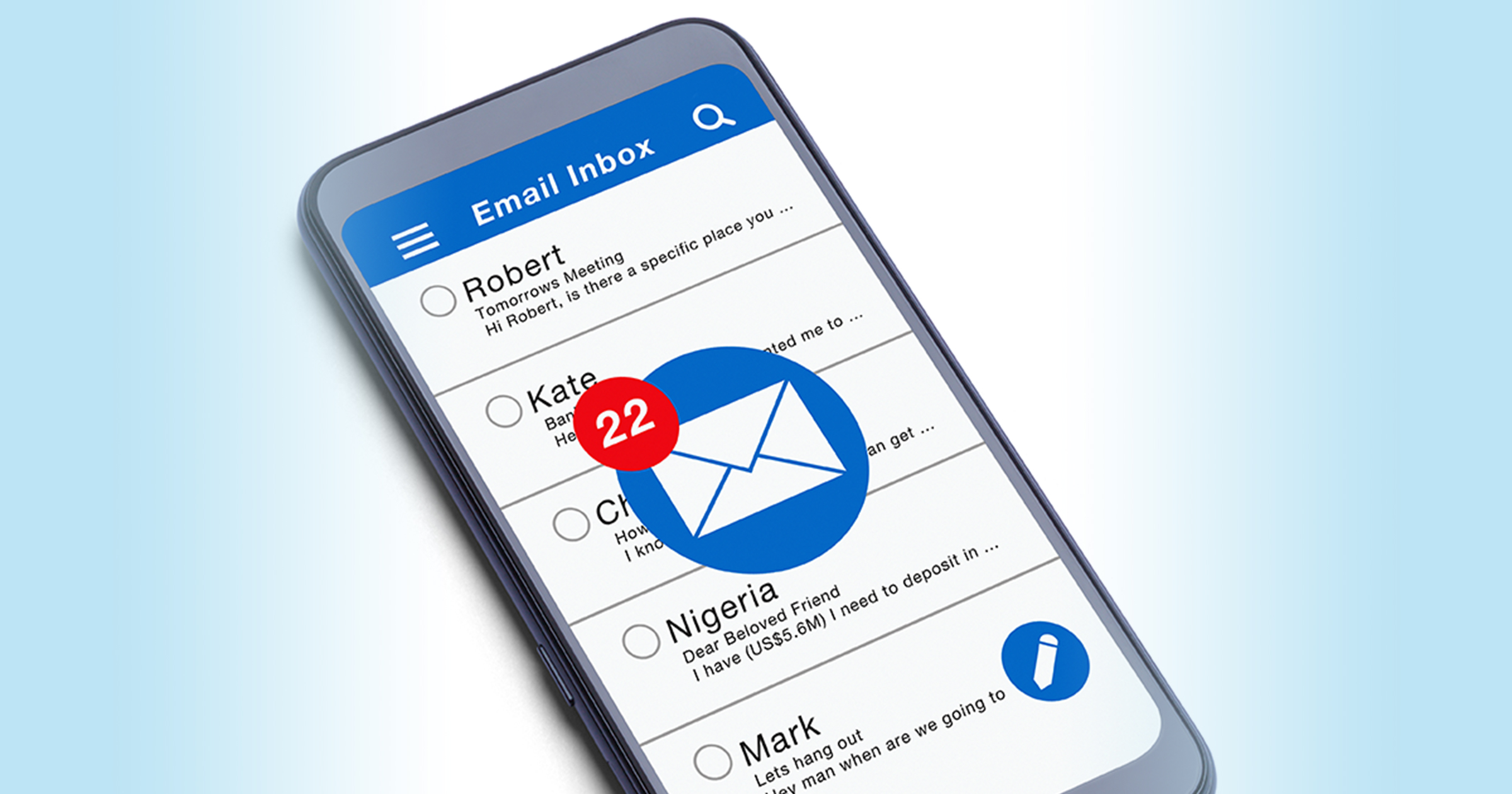Email Scams
What is an email scam?
Any email that delivers the means to commit fraud can be categorized as an email scam. The email might contain a link to an untrustworthy website or carry an attached file that’s infected with malware.
The most common email scams involve phishing, taking on the appearance of a legitimate communication from a trusted source. Fraudulent emails often pretend to be from a company you’re familiar with to exploit your trust.
No matter the approach, the goal of an email scam is always the same: to get your personal information and eventually your money.
Email scam examples
Here are a handful of common email scams. The more familiar you are with these tactics, the easier it will be for you to recognize and avoid fraud.
Foreign lottery
Congratulations! You just won a big prize from a foreign country. Or, maybe a Nigerian prince is willing to pay you to help move his money through a legal loophole. In any event, you must pay a small amount upfront if you hope to gain a larger reward later — though the prize never arrives.
Polls and surveys
Your opinion matters — except when your answers feed a scam that is only after your personal information. These fake polls may even correspond to a topic or social issue you care about. Clicking the link in the email causes your device to become infected with malware.
Banking login
You’ve just received an email claiming that something is wrong with your bank account, PayPal account, or some other financial app and demanding your immediate attention. Clicking the embedded link takes you to a fake site with a familiar logo. When you attempt to log in, your username and password are collected and then used by the scammer on the website where you thought you were all along.
The urgent attachment
Phishing emails try to trick you into downloading a dangerous attachment that infects your computer and possibly grants the scammer access to it. These emails might ask you to download attachments to confirm a package delivery, claim a prize or dispute an issue.
How to avoid email scams
- Ignore email from unfamiliar entities — If you don’t currently do business or haven’t requested information from the company in question, there isn’t a good reason to click a link or download an attachment from their email.
- Take a closer look at the email address — One way to confirm the legitimacy of an email is to verify the sender. If the email address isn’t tied to the company or is a random string of letters and numbers before the domain of a public email service, such as Gmail, delete the email. It’s easy to spoof the company name that appears in the “From” field, but much harder to appropriate a legitimate corporate email address.
- Avoid email that lacks personalization — Any email addressed to “dear valued customer” or “sir or madam” could be sent from a bot that is sending the same message to as many recipients as possible. This isn’t an exclusive deal or personalized offer. Go ahead and delete it.
- Scrutinize the link — Take a closer look at the link in the email. Does the URL visually correspond to where you expect it will take you, or are you headed for a domain that has nothing to do with the company that allegedly sent the email? Go one step further and hover your mouse over the link to make sure the actual destination matches up with the link text.
If you suspect you have been targeted by an email scam and have mistakenly provided your personal and/or account information to the scammer, please contact your local branch or our Customer Care Center at (800) 994-2500 (8:30 am - 5:00 pm, Monday through Friday) for assistance as soon as possible.



